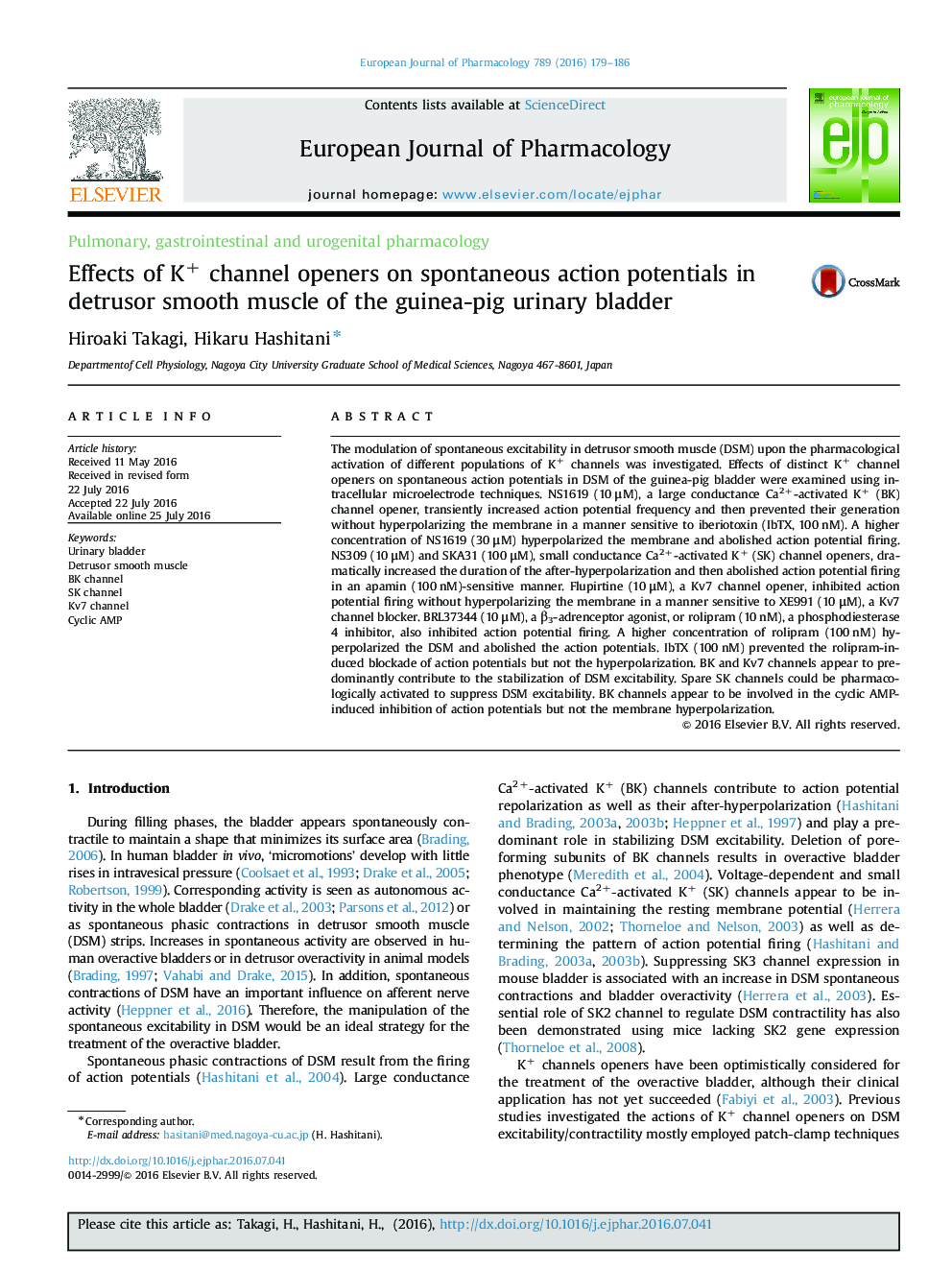| Article ID | Journal | Published Year | Pages | File Type |
|---|---|---|---|---|
| 2530844 | European Journal of Pharmacology | 2016 | 8 Pages |
The modulation of spontaneous excitability in detrusor smooth muscle (DSM) upon the pharmacological activation of different populations of K+ channels was investigated. Effects of distinct K+ channel openers on spontaneous action potentials in DSM of the guinea-pig bladder were examined using intracellular microelectrode techniques. NS1619 (10 μM), a large conductance Ca2+-activated K+ (BK) channel opener, transiently increased action potential frequency and then prevented their generation without hyperpolarizing the membrane in a manner sensitive to iberiotoxin (IbTX, 100 nM). A higher concentration of NS1619 (30 μM) hyperpolarized the membrane and abolished action potential firing. NS309 (10 μM) and SKA31 (100 μM), small conductance Ca2+-activated K+ (SK) channel openers, dramatically increased the duration of the after-hyperpolarization and then abolished action potential firing in an apamin (100 nM)-sensitive manner. Flupirtine (10 μM), a Kv7 channel opener, inhibited action potential firing without hyperpolarizing the membrane in a manner sensitive to XE991 (10 μM), a Kv7 channel blocker. BRL37344 (10 μM), a β3-adrenceptor agonist, or rolipram (10 nM), a phosphodiesterase 4 inhibitor, also inhibited action potential firing. A higher concentration of rolipram (100 nM) hyperpolarized the DSM and abolished the action potentials. IbTX (100 nM) prevented the rolipram-induced blockade of action potentials but not the hyperpolarization. BK and Kv7 channels appear to predominantly contribute to the stabilization of DSM excitability. Spare SK channels could be pharmacologically activated to suppress DSM excitability. BK channels appear to be involved in the cyclic AMP-induced inhibition of action potentials but not the membrane hyperpolarization.
Graphic abstractFigure optionsDownload full-size imageDownload high-quality image (178 K)Download as PowerPoint slide
